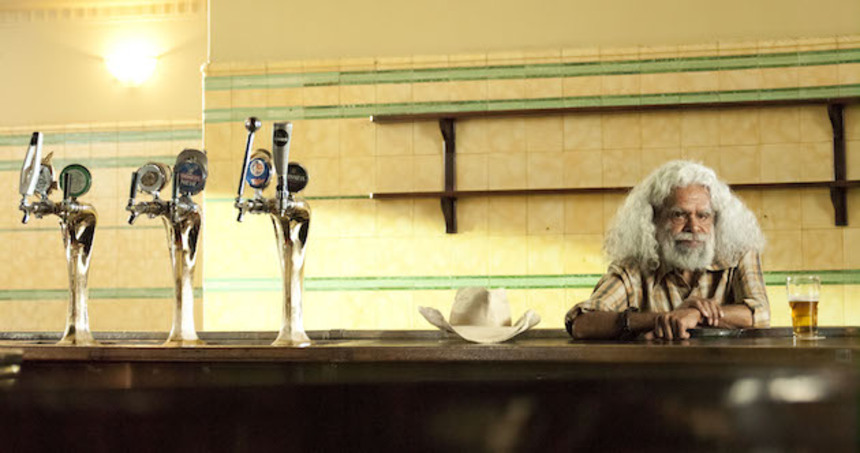Hot Docs 2014 Review: THE DARKSIDE Upholds the Tradition of Oral History

The modern Aboriginal woman is gorgeously framed on her porch while an older family member (tantalizingly just out of focus) plays solitaire in the background, this vignette is one of about a dozen such ghost stories that director Warwick Thorton lovingly renders in the tradition of oral history. In another a man recounts how he and his parents were attacked by the ghost of a dead man while they camp in his cabin. A woman sees the spirits of the long dead tribe of aboriginals who once dwelled on her sisters ranch-estate. A child is spotted on an isolated river bank in an impossibly pristine white dress only to vanish into thin air, but witnessed by two men in a canoe.
Were it not for the recognizable faces of actors such as Bryan Brown or Jack Charles (the latter recently seen in the magnificent Aussie-Noir Mystery Road) one would think that these were indeed just folks captured telling their stories. Hiring actors, meticulously arranging their surroundings and achieving cinema-perfect lighting brings the stringing of stories to a different kind of headspace. Thorton is cinematographer here as well and is no slouch also DP-ing on glossy down under productions Samson and Delilah and The Sapphires.
There may be a bit of an affectation on the part of the director who (just out of the frame) can be heard interacting, commenting and 'yes go on' prompting the speakers as they tell their tales of the supernatural. It adds an unnecessary veneer of veracity, along with the actors hesitating and miming discomfort to the camera, that cannot patch over seeing the guy from Cocktail and F/X as one of the locals. No matter, getting lost in good actors (the Ouija Board lady is Deborah Mailman and she is fantastic) telling great campfire stories, or near-death confessions is electrifying. Moreso when filmed with such an eye for setting the stage. More than one of the tales is only voice-over with an entirely different thing happening in the frame. It is an effective strategy, particularly in the case of a artist alone in his studio painting a portrait of a lost desert girl, as the encounter is being told simultaneously; a literal change in perspective at the end of the segment is hair-raisingly great.
The Darkside reminds me very much of James Marsh's woefully under-seen Wisconsin Death Trip, which features Ian Holm reading newspaper articles and accounts of a oddly hysterical string of crimes and madness that overtook the town of Black River Falls in the 19th Century while black and white re-creations are shown. It is surreal and straddles the border between ridiculous and sublime in the same way as the The Darkside looks at brushes with the afterlife through the lens of curiosity and guilt.
This juxtaposition is never stronger than the segment featuring a woman doing academic research in the Australian Sound and Film Archives who has a waking-dream of long deceased anthropologist Colin Mackenzie cutting her with a scalpel. She learns that the building hosting the wealth of Modern Australia's film culture formerly was formerly the site of a museum of skeletons (literal and figurative) of some barbaric research on aboriginal peoples when they were thought to be Darwin's Missing Link in the evolution of man. Her emotional response leads her to shift gears from academia to action and sees the returning the remains (half-forgotten in less elegant storage of half a dozen shipping containers) back to their families.
The Darkside could have easily strayed into Coast-To-Coast Radio kind of territory of the credulous and paranoia, but it instead achieves a sumptuous and emotional display of spirituality. Go on in and have a stickybeak around this collection of the country-continents strange encounters, and leave the Ouija board at home.

Do you feel this content is inappropriate or infringes upon your rights? Click here to report it, or see our DMCA policy.






